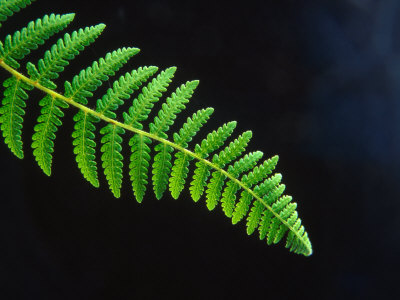"Clouds are not spheres, mountains are not cones, coastlines are not circles, bark is not smooth, nor does lightning travel in a straight line." - Benoit MandelbrotOn occasion, I notice some confusion about fractals. Namely, about the difference between the idealized ones we create like the Sierpinski Gasket or Mandelbrot set, and the ones we see in nature, like trees/deltas/grass/lungs/nerves...well, all kinds of things, really. Folks will sometimes take one idea from non-random fractals - that they show self-similarity across all scales, forever - and combine it with two perspectives on the physical world - that the deeper we probe, the more we find, and that sometimes across some scales we find fractals.
Take that figure up top - the Sierpinski Gasket. Take a shape, like a triangle (Fun Fact: it doesn't have to start as a triangle, all shapes approach the same final behavior). Get three of those bad boys together and stack them as seen in the second figure. Take that shape and two of its friends, stack them similarly. Repeat for like, ever.
This is a nice, non-random, utterly unnatural, geometric fractal.
There are other ways to build fractals. The Mandelbrot set is a map of initial conditions. Basically, given some iterative sequence such as the one above, how does it end, given some initial value? Some visual aid for you:
So, if the iteration grows infinitely, it is not considered part of the set. If it dies down, or stays in some stable range, it is. Thus the black areas up there are all numbers which, when plugged into the iteration, result in some finite value. What you see is a map of initial conditions.
And as I'm sure you've held witness to before (one example of many), you can see how the entire shape is repeated on smaller scales, infinitely. Which is not to say it is infinitely complex. It is actually very simple, it just gives rise to a shape we have difficulty describing with our familiar geometries and intuition.
With me? Good.
Lets move on to random fractals. Naturally occurring self-similar patterns with boundaries. From From Newton To MandelBrot by Stauffer and Stanley:
...no non-random fractals are found in Nature. What is found are objects which themselves are not fractals but which have the remarkable feature that if we form a statistical average of some property such as the density, we find a quantity that decreases linearly with length scale when plotted on double logarithmic paper. Such objects are termed random fractals...The difference is that in the real world, patterns are made of things. They are not perfect mathematical objects without limitations. Fractal geometry will help you map a coastline, but zoom in far enough, and you find particles with no interest in deforming themselves to fit your notions. Ferns make for distinct fractal patterns within a few scales; a group of leaves made of smaller, similar groups of leaves, looking not entirely unlike the leaves themselves.
But notice, that's where the scaling, the self-similarity, ends. The cells don't look like the leaves, and I imagine a forest of ferns wouldn't look much like a fern either.
So these natural fractals only exist within certain bounds.
Say, while we're here, if you don't mind terribly, I'd like to put to rest a little notion that comes up here and there: The orbits of electrons and the orbits of planets are unequivocally not similar in any respect. One is held in place by its own momentum and the gravitational pull of the sun, while the other is held into place by strict and peculiar quantum mechanics and electromagnetic forces. Unless you can find us some planetary orbits that look like these...
Ok! Thanks for allowing me that.
So like I was saying, natural fractals don't exist on all scales, for various reasons. The universe is a very busy place, and just when you think a pattern may begin emerging, some parameter, some interference somewhere, tends to put a stop to it. Gravity is trivial at small sizes, get too big and you might crush yourself. A sand dune can never get as small as the grains that compose it.
The universe is a brilliant zoo of patterns. Geometric, fractal, exponential, periodic, chaotic (that is, utterly non-patterned). The rules governing scaling behavior, networked interactions, are used in research across the academic spectrum - chemists depositing chemicals onto substrates see them, botanists modeling plant growth use them, neurologists trying to understand the distinctly non-linear computing power of the brain are forced to address them.
But the universe itself is all those things and so much more.
I hope I get to share more of it with you.





No comments:
Post a Comment